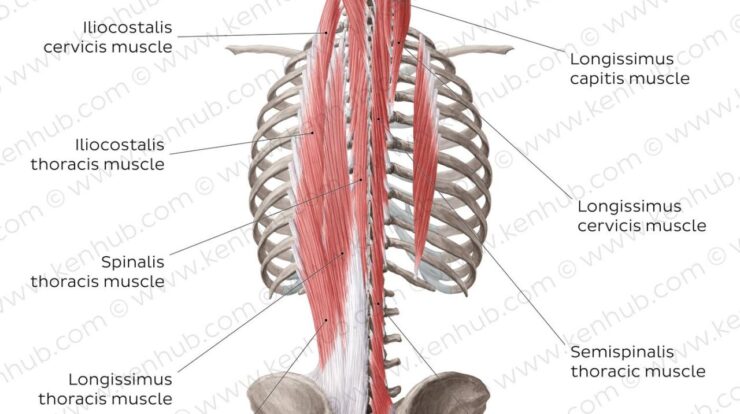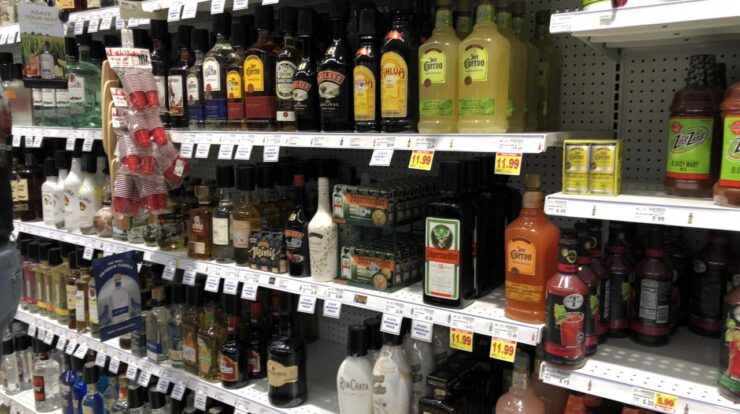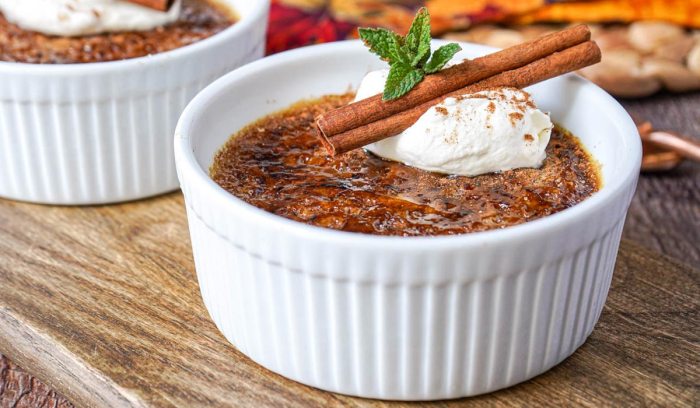
Embark on a culinary adventure with the delectable crab brulee recipe, a symphony of flavors that will tantalize your taste buds and ignite your passion for cooking. This extraordinary dish, steeped in history and boasting a distinctive taste, is a true masterpiece waiting to be savored.
As you delve into the intricacies of this recipe, you’ll discover the perfect balance of rich crab filling enveloped in a velvety custard base, topped with a tantalizing caramelized crust. Each element harmoniously blends to create an unforgettable dining experience.
Introduction to Crab Brulee: Crab Brulee Recipe
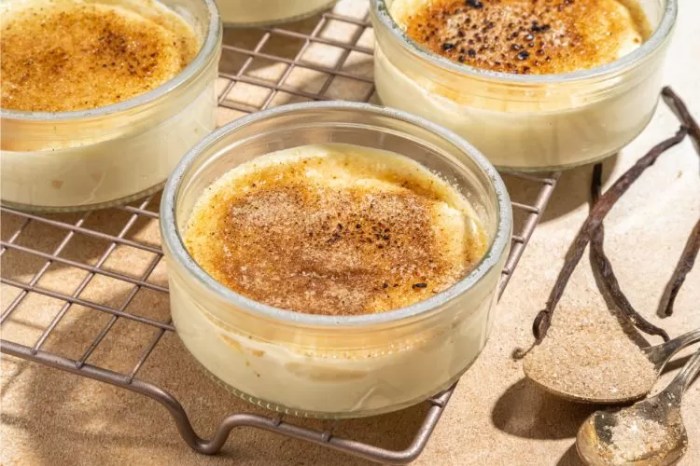
Crab brulee is a decadent seafood dish that originated in the coastal regions of France. It is believed to have been created in the early 19th century by chefs who were experimenting with new ways to prepare crab.
Crab brulee is made with fresh crab meat that is cooked in a creamy sauce and then topped with a layer of crispy, caramelized sugar. The dish is known for its rich, savory flavor and its unique combination of textures.
Origins and History
The exact origins of crab brulee are unknown, but it is believed to have been created in the coastal regions of France in the early 19th century. The dish was likely inspired by the popularity of other brulee dishes, such as creme brulee.
If you’re a seafood enthusiast, the crab brulee recipe is a must-try. This creamy and decadent dish features a savory crab filling topped with a crispy, golden crust. Serve it with a side of fresh vegetables or a crusty baguette for an unforgettable culinary experience.
Crab brulee quickly became a popular dish in France and spread to other parts of Europe and the United States. Today, it is considered a classic seafood dish and is often served in fine dining restaurants.
Ingredients and Preparation
To embark on the culinary adventure of creating crab brulee, an array of ingredients must be meticulously gathered. These include:
- 1 pound fresh crab meat, picked over for any shell or cartilage
- 1/2 cup heavy cream
- 1/4 cup milk
- 2 large eggs
- 2 egg yolks
- 1/4 cup grated Parmesan cheese
- 1/4 teaspoon salt
- 1/8 teaspoon black pepper
- 1/8 teaspoon cayenne pepper
With the ingredients assembled, the preparation of the crab filling commences. In a medium bowl, gently combine the crab meat, heavy cream, milk, eggs, egg yolks, Parmesan cheese, salt, black pepper, and cayenne pepper. Mix thoroughly until all ingredients are evenly distributed.
Creating the Custard Base, Crab brulee recipe
The custard base is the foundation of the crab brulee, providing a creamy and indulgent complement to the savory crab filling. To create this essential component:
- Preheat the oven to 325 degrees Fahrenheit (163 degrees Celsius).
- In a separate bowl, whisk together the remaining heavy cream, milk, eggs, egg yolks, salt, and black pepper.
- Gradually add the custard mixture to the crab filling, whisking constantly to ensure a smooth and homogeneous consistency.
Cooking Techniques
The art of creating the perfect crab brulee lies in the meticulous execution of cooking techniques. Temperature control and timing play pivotal roles in achieving the ideal texture and flavor.
If you’re craving a unique and flavorful seafood dish, check out this crab brulee recipe . The combination of creamy custard and tender crab is sure to impress your taste buds. And for a savory vegetarian option, try the chicken of the woods recipe . This wild mushroom has a meaty texture and can be prepared in various ways.
Crab brulee can be prepared using various methods, including baking, broiling, or a combination of both. Each method offers distinct advantages and challenges, and the choice depends on the desired outcome.
Baking
- Baking involves placing the crab brulee in a preheated oven at a relatively low temperature.
- This method allows for even cooking and results in a tender and creamy interior with a slightly crispy top.
- However, baking can be time-consuming, especially for larger batches.
Broiling
- Broiling exposes the crab brulee to intense heat from above.
- This method creates a flavorful and crispy crust on top while leaving the interior tender.
- Broiling is a quick cooking method, but it requires careful monitoring to prevent burning.
Combination Method
- Combining baking and broiling techniques allows for the best of both worlds.
- Start by baking the crab brulee to achieve an even cook throughout.
- Then, finish by broiling to create a crispy and golden-brown crust.
Presentation and Garnishes

The presentation of crab brulee is crucial to its overall appeal. The delicate custard and vibrant crab meat deserve an elegant and creative canvas to showcase their flavors.
One suggestion is to serve the crab brulee in individual ramekins. This allows for a personal touch and makes it easy for guests to savor the dish. To elevate the presentation, consider placing the ramekins on a bed of crushed ice or a layer of sea salt, creating a visually stunning and refreshing backdrop.
Garnishes
Garnishes play a significant role in enhancing the visual appeal and flavor of crab brulee. Carefully selected garnishes can complement the flavors of the dish and create a memorable dining experience.
- Fresh herbs:Delicate herbs such as chives, dill, or basil add a touch of freshness and vibrant color to the dish. Their aromatic notes also complement the seafood flavors.
- Citrus zest:A sprinkle of lemon or lime zest brightens the dish and adds a subtle citrusy flavor that balances the richness of the crab and custard.
- Seafood roe:Caviar or tobiko (flying fish roe) adds a touch of luxury and umami flavor to the crab brulee. The salty and briny notes of the roe enhance the seafood experience.
- Crispy shallots:Thinly sliced shallots that have been fried until crispy provide a textural contrast and a nutty flavor. They add a savory element to the dish.
Variations and Inspirations
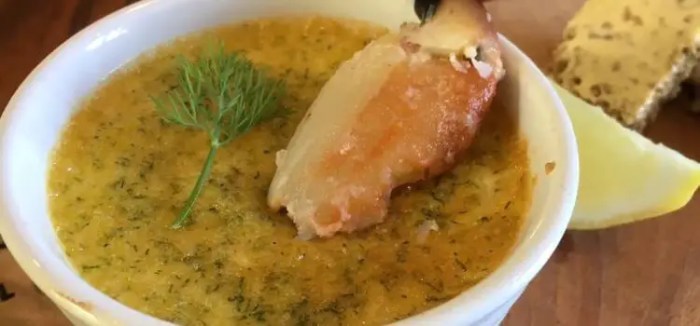
Crab brulee offers a versatile base for culinary creativity, inspiring numerous variations and interpretations.
Herbs, Spices, and Alternative Seafood
Incorporating herbs and spices can enhance the flavors of crab brulee. Consider adding fresh herbs like basil, chives, or parsley, or using aromatic spices such as paprika, cayenne, or saffron. Alternatively, explore using different types of seafood, such as shrimp, lobster, or scallops, to create unique variations.
Culinary Inspirations
Crab brulee draws inspiration from classic French cuisine, particularly the technique of creme brulee. The combination of creamy seafood filling and a caramelized sugar crust echoes the sweet and savory balance found in many French dishes.
Modern Interpretations
Modern interpretations of crab brulee often involve innovative twists on the traditional recipe. Chefs may experiment with different textures, such as adding crispy breadcrumbs or whipped egg whites to the filling. Molecular gastronomy techniques can also be employed, creating foams, gels, or spherifications to enhance the dish’s presentation and flavor profile.
Conclusion

The crab brulee recipe is a testament to the boundless creativity of culinary arts, offering a delightful fusion of textures and flavors. Whether you’re a seasoned chef or a home cook eager to impress, this recipe will undoubtedly become a staple in your culinary repertoire.
So, gather your ingredients, ignite your stove, and embark on a journey to create this exquisite dish that will leave a lasting impression on your palate and the memories of those you share it with.
Clarifying Questions
What is the origin of crab brulee?
Crab brulee has its roots in classic French cuisine, where it is known as “crabe en croute” or “crab in a crust.” The dish gained popularity in the 19th century and has since become a staple in seafood restaurants and fine dining establishments.
What makes crab brulee unique?
Crab brulee stands out with its combination of delicate crab filling and a rich, creamy custard base. The caramelized crust adds a touch of sweetness and crunch, creating a symphony of flavors and textures.
What are some tips for making a perfect crab brulee?
To achieve the perfect crab brulee, ensure precise temperature control and timing. Bake the custard base until it sets but still has a slight wobble. Allow the brulee to cool completely before caramelizing the sugar topping to prevent cracking.

